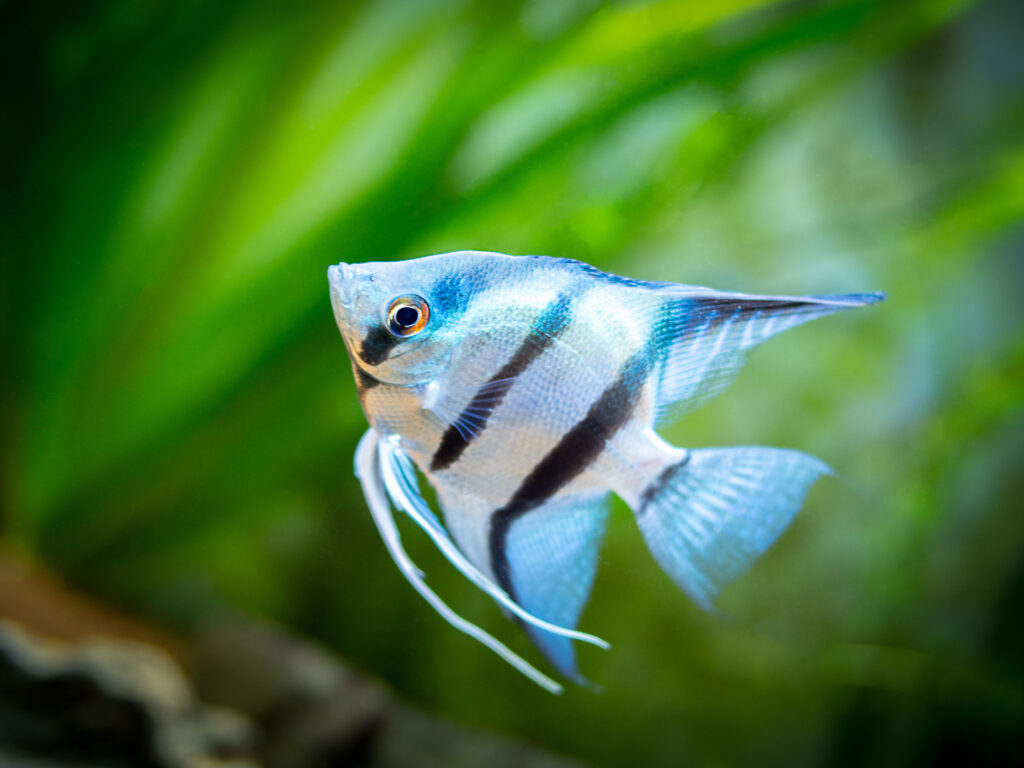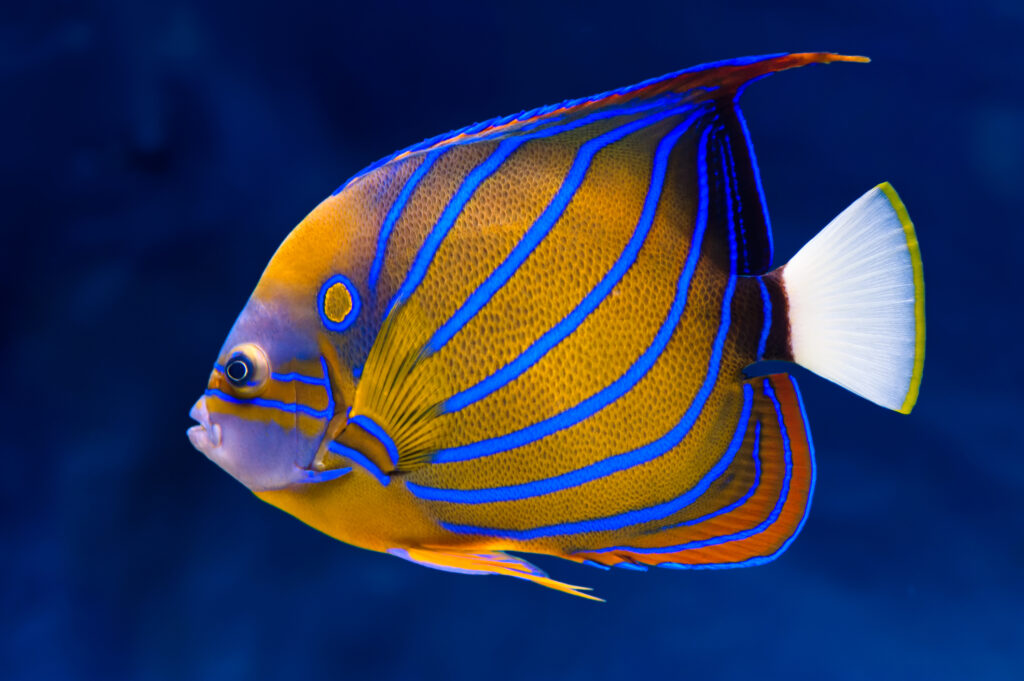Angelfish are known for their mesmerising beauty and elegant movements, and hold a cherished place in the hearts of aquarium enthusiasts and marine biologists worldwide.
From the regal Emperor angel to the enchanting Blue Queen angel and the fiery Flame angel, angelfish captivate observers with their diverse forms and striking hues.
In our latest blog we uncover 7 intriguing facts about these mesmerising creatures. From their evolutionary origins to their remarkable ability to change gender, angelfish continue to captivate our imagination and enrich our understanding of the natural world.
What is an angelfish?
Angelfish, belonging to the family Pomacanthidae, are renowned for their distinctive shape and vibrant colours. This family encompasses a wide array of fish, each adding its unique qualities to the underwater world. Some examples of are Red Stripe angelfish (Centropyge eibl), Lemon Peel angelfish (Centropyge flavissima), and Flame angelfish (Centropyge loriculus).
So, what else is there to learn about this species of fish?
There are two main types of angelfish
Angelfish are broadly classified into two categories: marine and freshwater. There are round 85 different types of marine angelfish, while there are around 3 species of freshwater angelfish which belong to the same family as the incredibly diverse cichlids. You can see a great number of this type of fish right here at Hastings Aquarium – check out our exhibits to see what’s on!
Freshwater angelfish live in South American river basins
Freshwater angelfish thrive in the serene river basins of South America, preferring slow-moving waters rich in vegetation.

Unlike their marine counterparts, freshwater angelfish exhibit territorial behaviours and form hierarchies within their social groups. They are often seen darting among submerged roots and plants, utilising their streamlined bodies to navigate their environment.
Marine angelfish are found in the Indian, Atlantic and Pacific oceans
In contrast, marine angelfish thrive in warm, shallow waters of coral reefs across the Indian, Atlantic, and Pacific oceans. They add vibrancy to ecosystems, forming a type of symbiotic relationships with corals and serving as vital indicators of reef health. In their natural habitat, they display complex behaviours and social structures, vital for hunting and survival.
Some species can change gender
Some species of marine angelfish exhibit a fascinating phenomenon known as sequential hermaphroditism, where individuals can change gender under specific circumstances. This can occur when a male protector dies, or a member of the breeding pair is lost. This adaptive trait underscores their resilience and ability to thrive in dynamic marine environments. Clownfish are also known to exhibit this behaviour.
Their name isn’t related to religion
The angelfish’s scientific name originates from the Greek word “Pterophyllum,” meaning “sail leaf,” a fitting description of their graceful appearance. You may have seen the prefix “ptero” before in pterodactyl, meaning wing-finger.

Their shape helps them evade predators
The unique shape of angelfish, characterised by their laterally compressed bodies and elongated fins, offers them a distinct advantage in evading predators. Their streamlined form enables swift movements and agile manoeuvres, allowing them to navigate their underwater environments to escape from danger.
Why not come and see our angelfish for yourself and put your knowledge to the test? Book your tickets today to see these beautiful species and many more!
